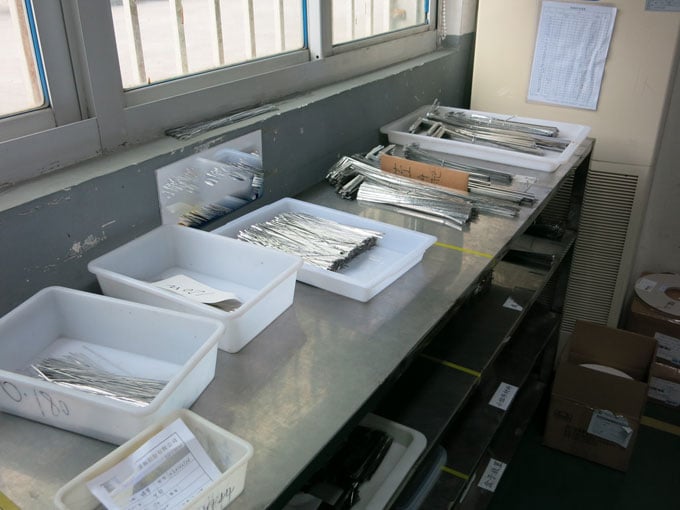Solar Cell Soldering: what is it?
When learning solar cell soldering, who better to copy than the Chinese manufacturers themselves? :-)
Solar cell soldering is a skill that is not for people with big, rough hands. At the same time, it is a fairly easy thing to learn, but it comes with a few basics that need to be closely followed.
Which equipment is needed for solar cell soldering?
First of all, for good results, a quality soldering iron is needed. The common standard for example in China is a 90 or 130 Watts soldering iron. The size of the soldering tip may vary but can not exceed the size of the tab ribbon that is soldered on the cell. Soldering temperature is key here. The right temperature depends on the solder melting temperature that you're using, so you can look that up.
Soldering flux: tab ribbons do not stick, what went wrong?
In order to solder the tab ribbons to the solar cell, PV manufacturers apply soldering flux to the tab ribbon. This is done to remove any oxidation and it will make sure that the ribbons will stick to the solar cell perfectly. On the photo below you see tab ribbons in a bath of soldering flux. The soldering flux is used to remove the oxide from the tab ribbons or bus ribbons. Once the oxide has been removed, the ribbons can be used.  Tab ribbon in soldering flux
Tab ribbon in soldering flux
What is the temperature of the soldering iron?
The temperature is important and can vary from 300 to 450 degrees Celsius. As mentioned above, it depends on the melting temperature of the solder on the tab ribbons. The hotter the soldering iron, the faster you can work. However, it is important not to overheat the solar cells, which will make the cells brittle and will definitely damage the cell. Overheating the solar cell, which can happen when the soldering iron is held too long on the solar cell, will make the solar cell extremely vulnerable. The risk is that the solar cell will crack during the lamination process.  Solar cell soldering.
Solar cell soldering.
The reason why an extremely hot iron is needed is that the solar cells will function as a heat sink. When working with a hot iron, the cell will basically cool it down. The solder should melt before the cells takes out all the heat from the iron. The bigger the solar cell, the more heat you need to melt the solder. Manufacturers usually have a heating pad underneath the solar cells during soldering.  Solar cells - string soldering.
Solar cells - string soldering.
Observing a well-trained and experienced person soldering solar cells, one will notice that the solder is melting extremely fast (hot iron) and the ribbon is attached carefully on the cell within a second. Solar cells are of such high costs that one should never save money on this equipment and invest in quality soldering iron and ribbons. Picking professional soldering irons and money spent on expensive ribbons (with silver in it) is money well spent. Manual solar cell soldering in factory in China.
Manual solar cell soldering in factory in China.
Automatic solar cell soldering
Nowadays the majority of solar module manufacturers are switching to automatic solar cell soldering. There are several advantages to this.  Automatic solar cell soldering[/caption] When using automatic soldering, the quality is more consistent, there are less breakages and thinner solar cells can be used. Thinner solar cells are of course cheaper. With the arrival of low-cost China-made automatic stringing machines, in the future, we'll see more and more factories using automatic soldering equipment.
Automatic solar cell soldering[/caption] When using automatic soldering, the quality is more consistent, there are less breakages and thinner solar cells can be used. Thinner solar cells are of course cheaper. With the arrival of low-cost China-made automatic stringing machines, in the future, we'll see more and more factories using automatic soldering equipment.

frank
on 07 Mar 2016Micheal
on 04 Nov 2016Jordan
on 21 Oct 2019